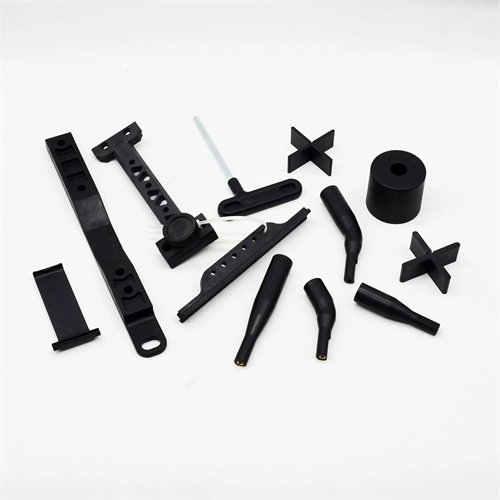Injection molding bulge and its solution
Injection molding bulges are a common surface defect in plastic parts, appearing as localized outward protrusions. This not only affects the product’s appearance but can also weaken its structural strength. This defect often stems from uneven shrinkage during melt cooling. When thick, inadequately cooled areas exist within the part, the outer layer solidifies first, and the subsequent contraction of the inner layer pushes the surface outward, causing bulges. In automobile bumper production, when using PP+EPDM material, the corners are 3mm thicker than the surrounding area. Insufficient cooling time can easily lead to bulges with a diameter of 5-8mm. This resulted in a 30% rework rate for one batch of products, resulting in significant cost losses.

Unreasonable mold design is a key factor causing bulging, especially the lack of matching between the cooling system layout and the cavity structure. When there are local depressions in the cavity or the ribs are too thick, the flow rate of the melt in these areas slows down, and the accumulated heat is difficult to dissipate. Taking the back cover of a TV as an example, the thickness of the internal reinforcement ribs is 4mm, while the thickness of the adjacent shell is only 2mm. The traditional cooling water channel does not have a separate cooling circuit designed for the rib position, resulting in the cooling time at the rib being 6 seconds longer than the shell. The shrinkage difference causes surface bulging. Through three-dimensional scanning of the mold, it was found that the correspondence rate between the bulge position and the ribs was as high as 92%, verifying that the mismatch between structural design and cooling was the main cause.

Adjusting process parameters based on material properties is an effective way to solve bulging. For crystalline plastics such as PA66, the volume shrinkage rate during the cooling process can reach 2-3%. If the pressure in the holding stage is insufficient, bulging is very likely to form at the thick wall. In the production of a certain nylon gear, because the holding pressure was only 50% of the injection pressure, continuous bulging appeared at the root of the tooth. By increasing the holding pressure to 70% of the injection pressure and extending the holding time to 60% of the cooling cycle, the melt was fully compensated during the shrinkage process, and the bulging rate was reduced from 25% to 3%. At the same time, increasing the mold temperature to 80°C and slowing down the surface solidification rate can also help reduce bulging caused by internal stress.

Mold venting performance is equally important for preventing bulging. When gas in the mold cavity cannot be exhausted promptly, the compressed gas forms high-pressure areas, hindering melt filling and causing localized bubbles, which, upon cooling, develop into bulges. In the production of laptop battery casings, poor venting at the buckle points on the edge of the casing during injection molding using ABS material resulted in dense, small bulges. By adding 0.015mm-deep venting grooves on the mold parting surface corresponding to the buckle points and combining them with a vacuum-assisted venting device, the residual gas content in the mold cavity was reduced from 15% to 3%, completely eliminating the bulging defect. Furthermore, regularly cleaning carbon deposits in the venting grooves ensures unobstructed venting and prevents recurrence of the defect later in production.

Post-processing can be used as a supplemental means to address minor bulges, but it should be used with caution to avoid affecting product performance. For optical lenses made of PC material, if tiny bulges less than 0.1mm appear, a hot pressing process can be used: the plastic part is placed in a constant temperature mold at 120°C, and a pressure of 0.5MPa is applied for 30 seconds, using the thermoplastic properties of the material to smooth the bulged area. After a batch of lenses was treated using this method, the appearance qualification rate increased from 82% to 95%. However, it should be noted that excessive pressure can cause lens deformation, and excessive temperature may cause material discoloration. Therefore, post-processing is only suitable for minor defects that cannot be resolved through mold and process optimization.
